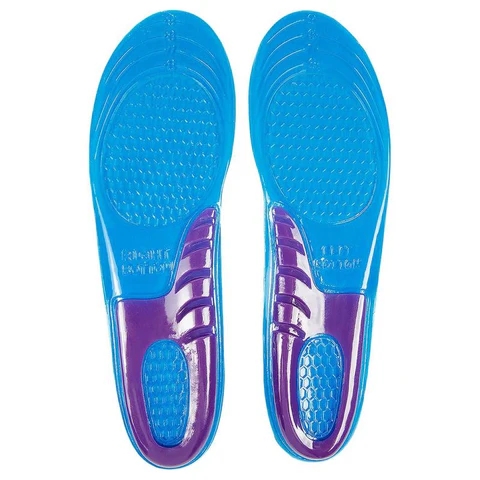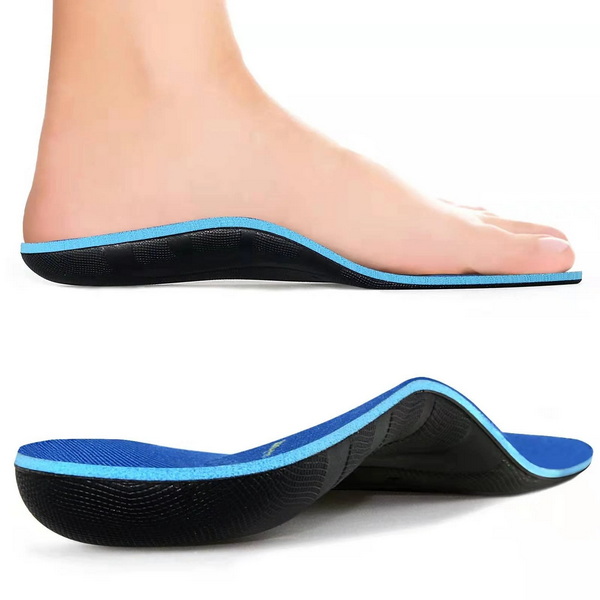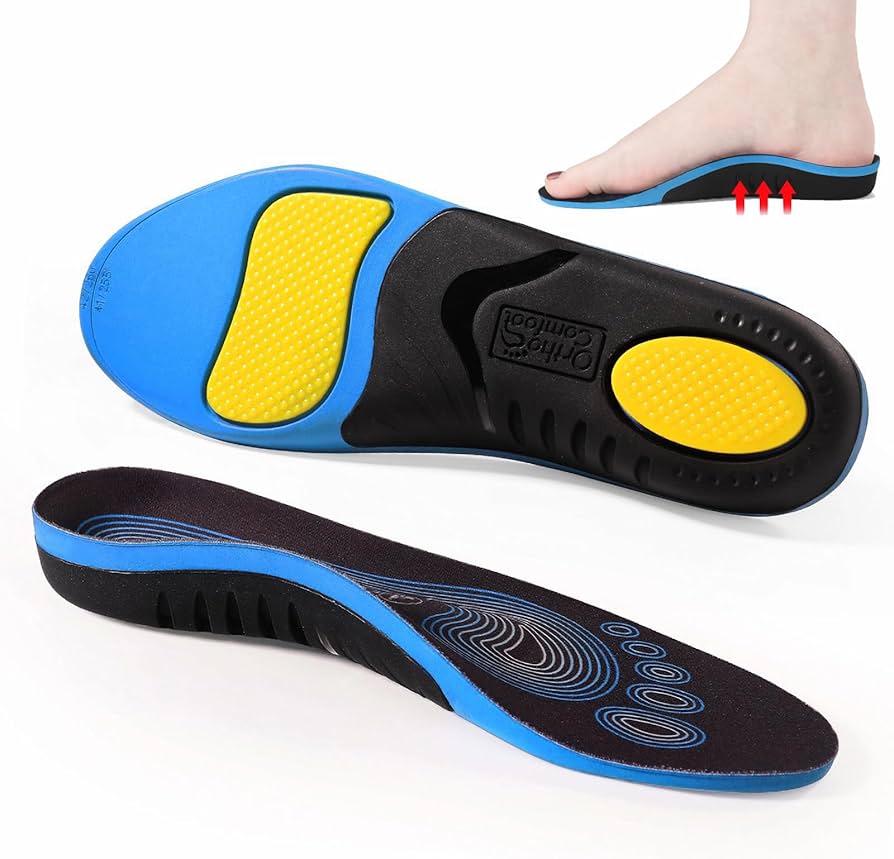Views: 222 Author: Edvo Publish Time: 2025-10-24 Origin: Site











Content Menu
● Understanding the Purpose of Insoles
● Gel vs Foam Insoles: The Key Differences
● The Rise of Hybrid Gel-Foam Insoles
● The Importance of OEM Manufacturing in Insole Production
>> Common OEM Customization Options:
● Maintenance and Care Tips for Both Insoles
● Environmentally Friendly Materials and Sustainability Trends
● FAQs
>> 1. What are the key performance differences between gel and foam insoles?
>> 2. How long do gel and foam insoles typically last?
>> 3. Are hybrid gel-foam insoles more expensive?
>> 4. Can OEM manufacturers customize insole hardness and color?
>> 5. Which insole material is better for cold weather?
Insoles are one of the simplest yet most beneficial footwear accessories for achieving lasting comfort, performance support, and improved posture. Whether for athletes, workers, or daily wearers, choosing the right type of insole can significantly impact how feet feel during long periods of activity. Among the many materials available, gel insoles and foam insoles dominate the global market because of their excellent cushioning, adaptability, and affordability. However, both options come with distinct strengths that make them better suited for certain users and activities.
This article takes an in-depth look at gel vs foam insoles, comparing their structure, benefits, performance, and manufacturing aspects from the perspective of professional Chinese OEM suppliers serving international footwear brands.

The primary purpose of insoles is to provide comfort and protection for your feet by improving how they interact with your shoes and the ground. Insoles absorb the impact that occurs when you walk, run, or jump, reducing stress on your joints and spine. They also prevent fatigue and help correct unnatural posture or gait.
Functions of modern insoles include:
- Cushioning impact to reduce strain on heels and knees
- Supporting arches and aligning foot structure
- Enhancing balance by redistributing body weight
- Preventing friction-related blisters and calluses
- Improving the internal fit of shoes
Many wearers underestimate how much difference a high-quality insole can make. Over time, proper insoles not only protect physical health but also extend the lifespan of your footwear by maintaining its shape and internal balance.
Gel insoles are composed of synthetic thermoplastic gel or silicone-like materials known for their elasticity and shock-absorbing properties. They are relatively heavier than foam but deliver a distinctive “springy” feel underfoot. The gel material can be shaped into different zones and thicknesses depending on the area of the foot that requires the most pressure relief.
1. Outstanding Shock Absorption:
Gel disperses impact more effectively than many other materials. This makes it ideal for runners, gym users, and individuals who spend hours on hard floors.
2. Stable Support:
Unlike foam insoles that compress over time, gel cushions maintain their shape and density, offering consistent support.
3. Cooling Sensation:
Gel insoles give a slightly cool feeling to the feet, which is beneficial in warm climates or during intense workouts.
4. Pain Reduction:
Medical-grade gel insoles are often recommended for people suffering from plantar fasciitis, heel spurs, or arthritis, as they help relieve localized pressure.
5. Long-Term Durability:
Gel material resists flattening and can last through extensive wear cycles, making it highly cost-effective for frequent users.
However, since gel is denser, gel insoles tend to be heavier. This may not be suitable for people seeking ultra-light footwear or flexible fit adjustments.
Foam insoles are made from polymer-based foam structures such as EVA (ethylene vinyl acetate), PU (polyurethane), or memory foam. Each foam type offers distinct advantages in compression resistance, resilience, and softness.
EVA foam is generally the most popular due to its versatility, lightweight nature, and cost efficiency. It delivers consistent cushioning across different densities, making it a favorite choice for both casual and athletic footwear brands.
1. Featherlight Comfort:
Foam insoles weigh significantly less than gel ones, making them perfect for everyday shoes, boots, and fashion sneakers.
2. Custom Fit:
Certain foams, such as memory foam, conform gradually to the foot's shape, providing personalized comfort and balanced support.
3. Pressure Distribution:
Foam evenly distributes pressure across the entire foot, minimizing hotspots and reducing fatigue during long work shifts.
4. Breathability:
Many foams are engineered with open-cell structures that allow air circulation, keeping feet dry and cool.
5. Affordability for OEM Brands:
Due to their easy processing and low material cost, foam insoles are widely used by global OEM shoe manufacturers offering custom branding and mass production.
The main drawback of foam insoles is gradual compression over time, especially with low-density versions. However, this can be mitigated by using multi-layer foam structures or higher-density EVA formulations.

Understanding the differences between these two materials helps identify which type best matches specific uses and foot conditions.
| Category | Gel Insoles | Foam Insoles |
|---|---|---|
| Material Component | Thermoplastic gel or silicone-based compounds | EVA, PU, or memory foam |
| Cushioning Feature | High shock absorption, ideal for impact activities | Soft adaptive comfort, conforms to feet |
| Durability | Long-lasting, resists flattening | May compress over time |
| Weight | Heavier | Lightweight |
| Temperature | Cooler sensation | Retains warmth |
| Flexibility | Medium flexibility | Highly flexible and soft |
| Suitable Users | Runners, athletes, people with heel pain | Office workers, casual wearers |
| Overall Comfort | Firm bounce feeling | Plush and light sensation |
Each option has its own purpose: gel insoles support performance and stability, while foam insoles focus on everyday comfort, affordability, and customizable fit.
Choose gel insoles when:
- You need to reduce stress on knees, joints, or heels.
- You perform physically demanding activities like running or hiking.
- You have foot pain conditions that require medical cushioning.
- You prefer firm stability instead of soft sinking sensation.
- You expect long-term resilience and minimal wear.
Athletes often prefer them because they absorb vibrations effectively during repetitive impact, preventing muscle fatigue. High-grade gel insoles are especially beneficial for individuals requiring extra protection during recovery from foot or ankle injuries.
Choose foam insoles when:
- You wear shoes for daily commuting, standing, or walking.
- You seek lightweight comfort without adding extra weight to shoes.
- You want insoles that adapt naturally to your foot's contours.
- You need cost-effective, customizable options for private label projects.
- You prefer soft cushioning and flexibility for relaxed wear.
Foam insoles are particularly suitable for occupational or service industry workers who spend long hours on their feet. They reduce pressure accumulation and prevent fatigue better than hard insoles.
Over the past few years, hybrid structures that combine gel and foam layers have become a major technological trend in insole manufacturing. These designs capitalize on the strengths of both materials — gel offers targeted pressure absorption, while foam delivers soft and adaptive cushioning.
For instance, many sports insoles feature gel pods under the heel for impact protection and EVA foam layers across the midfoot for comfort. Some high-end orthopedic insoles now embed gel inserts within memory foam for maximum shock absorption and arch alignment.
Hybrid insoles cater to users who want a balance between function and comfort. They have also become a major focus in OEM/OEM insole manufacturing in China, where advanced molding and layering equipment allows precise density control for each segment of the insole.
China has developed a sophisticated network of OEM and ODM insole manufacturers that serve global shoe brands. The ability to customize materials, density levels, and design aesthetics has made Chinese suppliers highly competitive in international markets.
- Dual-density combinations (gel + EVA or PU + memory foam)
- Embossed or printed brand logos
- Antimicrobial and moisture-wicking coatings
- Eco-friendly EVA and biodegradable foam compounds
- Orthopedic and sport-specific shape adjustments
Working with Original Equipment Manufacturers (OEMs) allows international brands to scale production efficiently while maintaining consistent quality standards. Chinese factories also have testing facilities to assess compression set, resilience, hardness, and durability of insoles before export.
For example, gel and foam insoles can be custom-formulated according to end-user requirements — athletes may demand high-rebound EVA or firm gel, while medical users might require softer cushioning to relieve pressure points.
Regardless of the material, proper maintenance extends the life of insoles and maintains hygiene.
To ensure longer use:
- Remove them from shoes regularly to air-dry.
- Clean with mild soap and water — avoid harsh chemicals.
- Replace every six to nine months for active users.
- Check for compression marks or uneven wear regularly.
- Alternate between pairs if used daily.
By following these guidelines, both gel and foam insoles can continue delivering comfort and performance benefits for an extended period.
As sustainability becomes a core value in manufacturing, eco-friendly EVA foam and recyclable gel materials are increasingly used. Chinese factories now produce EVA derived from plant-based polymers and recyclable thermoplastic gels. These advancements help brands reduce their carbon footprint and meet regulatory standards in Europe and North America.
In addition, biodegradable packaging and energy-efficient curing technologies further demonstrate manufacturers' commitment to greener production. This direction is especially attractive for international brands prioritizing ESG (Environmental, Social, and Governance) goals.
So, are gel or foam insoles better? The answer depends entirely on the user's activity needs and comfort preferences.
- Gel insoles deliver superior durability and shock absorption, making them ideal for athletics and high-impact activities.
- Foam insoles provide unmatched softness, lightweight comfort, and customization flexibility for everyday casual use.
- Hybrid gel-foam insoles combine both qualities for an optimal balance of performance and comfort.
When selecting insoles for OEM manufacturing or retail, consider end-user needs, footwear type, and comfort goals. Collaborating with a reputable Chinese insole manufacturer ensures access to precise material engineering, cost-effective solutions, and consistent global supply.
Ultimately, whether you choose gel, foam, or hybrid, the best insole is the one that supports long-term comfort, foot health, and brand value.

Gel insoles are more durable and excel at absorbing shock, while foam insoles offer lighter weight and a softer adaptive fit. Gel is best for sports or pain relief, and foam fits daily use and work shoes.
Gel insoles can last 9 to 12 months with regular use because they retain shape well. Foam insoles may need replacement every 6 to 8 months if used heavily, especially memory foam models.
Yes, slightly. However, they provide improved comfort and longer lifespan, making them a worthwhile investment for people who stand or move all day.
Absolutely. Chinese manufacturers can adjust density, color, logo design, and surface texture to match each brand's needs, ensuring product uniqueness and market appeal.
Foam insoles are better for cold climates because they retain warmth inside shoes, while gel offers a cooling sensation more suitable for tropical or athletic environments.